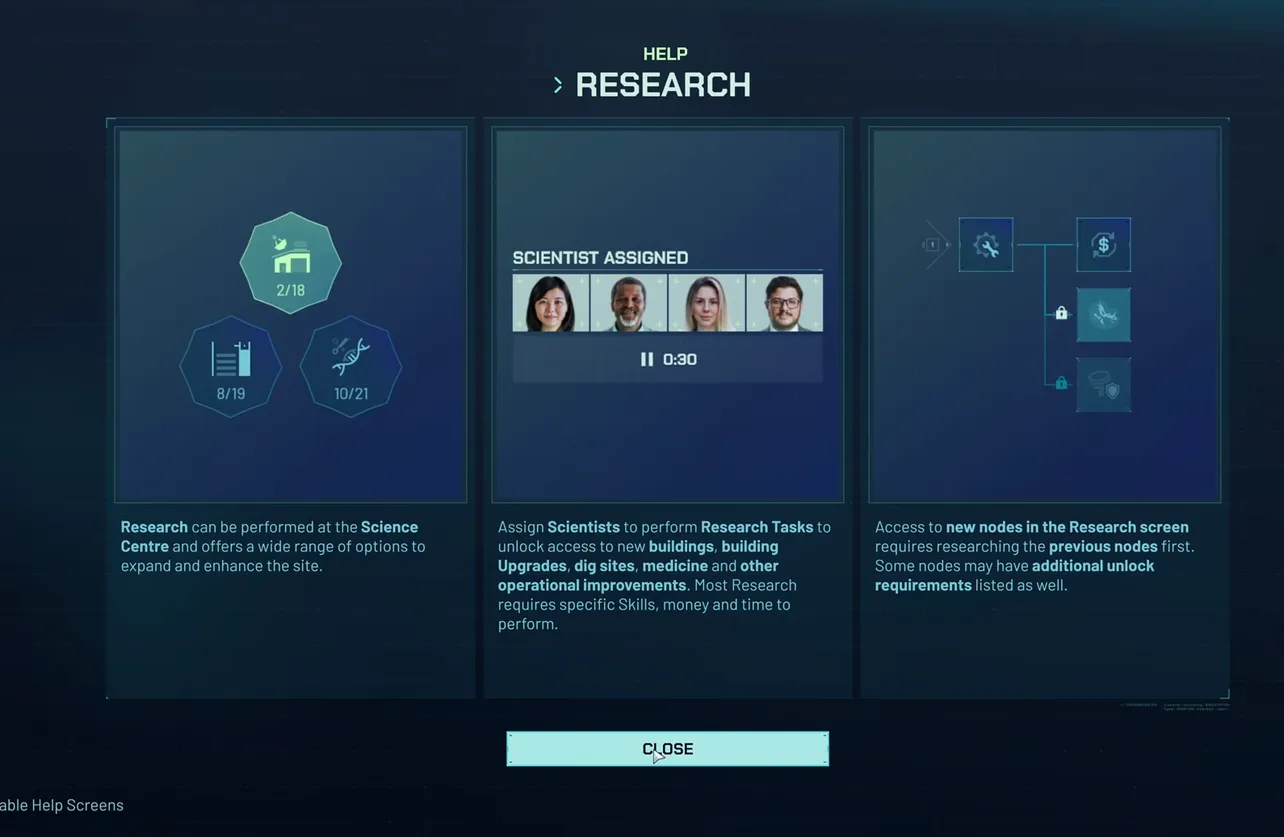Research is the spine of Jurassic World Evolution 3. Almost every building, upgrade, dig site, genome, and hybrid runs through the Science Center, and you’ll feel the difference immediately when you pick the right unlocks in the right order. Here’s how research works, what each area covers, and a sane priority list that keeps your dinosaurs safe and your cashflow steady.
How research works (and where to start)
Build a Science Center and open its interface to access the Research screen (it’s the fourth tab in the building UI). Each node requires money, time, and assigned Scientists, and most projects have minimum skill thresholds. Logistics is the key stat for research tasks; make sure your assigned team meets or exceeds the requirement.
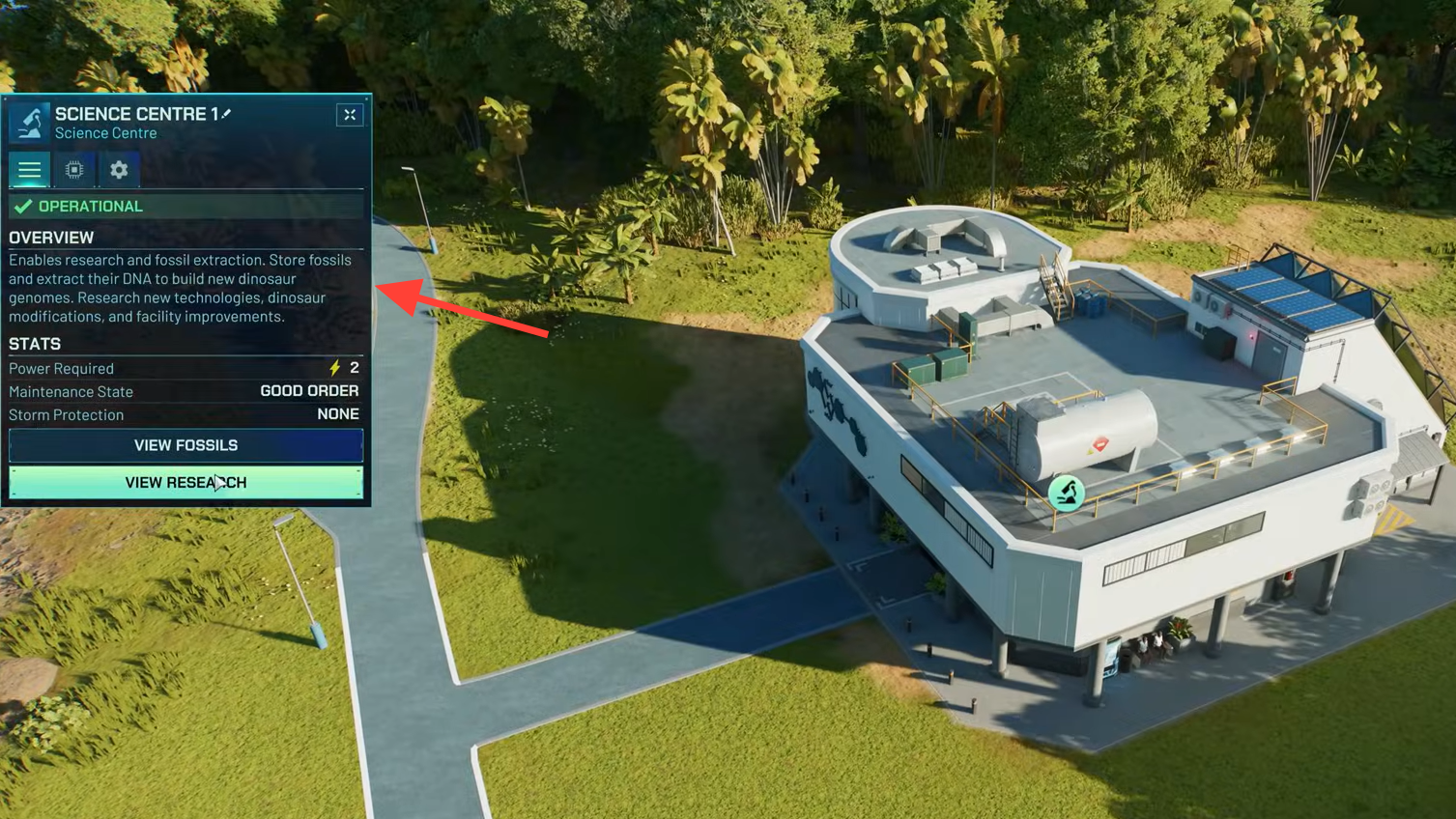
Nodes are chained. Click any node to see prerequisites and skill requirements before you commit. Research stacks up quickly, so pace your queue with your income — rushing too many projects at once can stall expansion or force sell-offs.
There are 113 total research nodes spread across eight areas. Understanding what lives in each bucket makes prioritization simple.
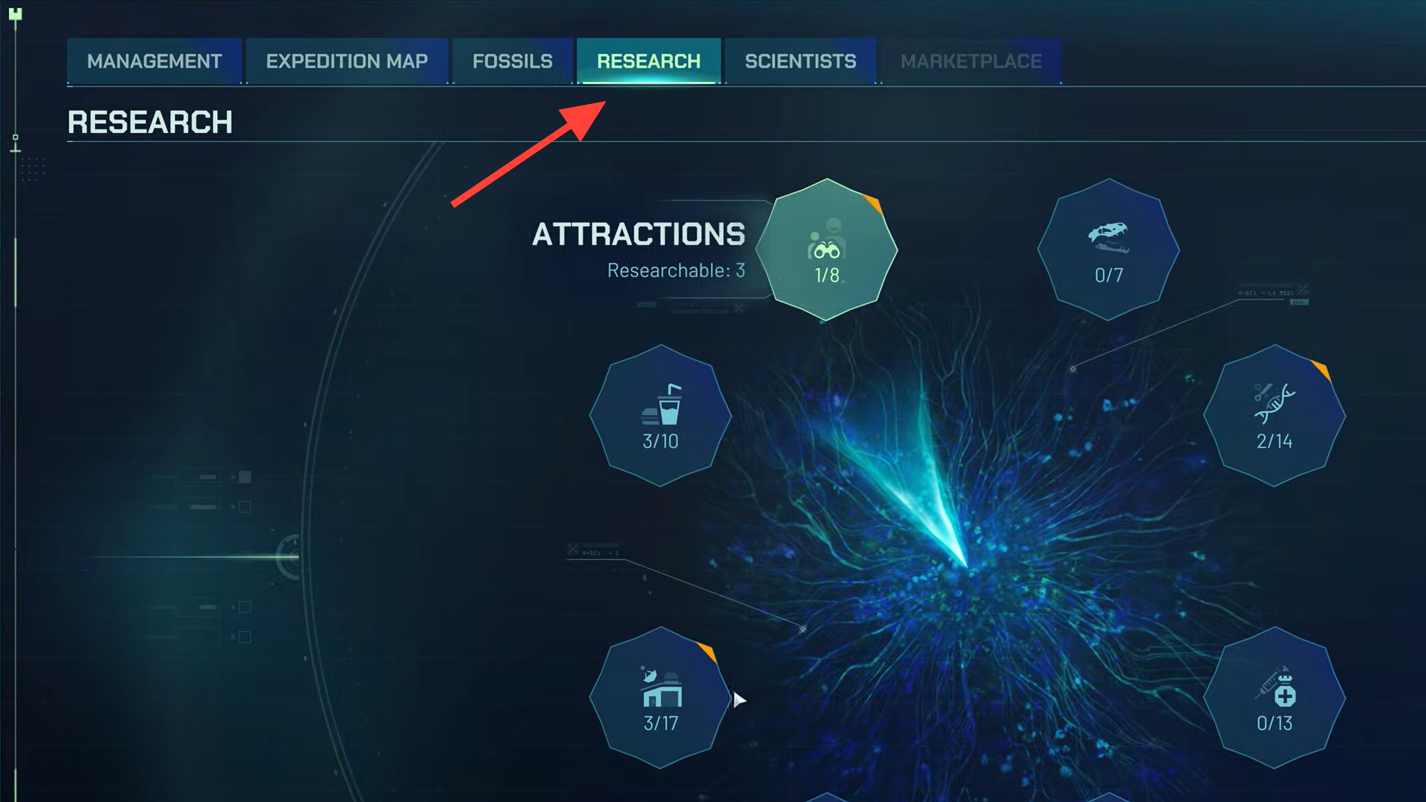
Research areas at a glance
| Area | What it unlocks | Early priority |
|---|---|---|
| Operations | Power, staff buildings, maintenance tools, global infrastructure upgrades | High |
| Enclosures | Fences, hatcheries, habitat tools, safety upgrades | High |
| Medicine | Disease cures and preventative treatments for dinosaurs | High (right after) |
| Guests | Amenities, wider paths, guest comfort buildings | Medium |
| Attractions | Tours and viewing experiences that lift appeal | Medium |
| Dig Sites | Access to fossil locations for new species genomes | Medium (as budget allows) |
| Gene Modification | Traits that alter dino temperament, space needs, and health | Late (post‑stability) |
| Hybrids | Cross‑species dinosaurs | Late |
What to research first (a stable early-game route)
Start with Operations and Enclosures. These upgrades prevent outages, reduce failure points, and keep animals where they belong. Follow quickly with key Medicine cures so a single outbreak doesn’t cascade into losses. Once the park is running smoothly, invest in Guests and Attractions to convert stability into reliable revenue. With money flowing, expand into Dig Sites to diversify species, then explore Gene Modification. Save Hybrids for last — they’re expensive and better suited to a mature park.

Operations picks that pay off quickly
- Power 2: Upgrades power coverage and removes refueling from the equation for core stations, cutting downtime and micro.
- Staff Center 2: Lifts the one‑building cap so you can rest more Scientists and recruit deeper benches; also opens training up to level three.
- Core Upgrades: A low‑cost branch that underpins mid‑game systems; taking it early avoids blockers later for cheap.
Enclosures and medicine: lock in safety, prevent spirals
Within Enclosures, prioritize sturdier fencing and core hatchery improvements before aesthetics. Stronger fences reduce escapes during storms and stress events, which keeps guest safety and ratings intact. Pair that with early Medicine cures and preventatives so you can treat illnesses immediately instead of moving animals, losing comfort, and triggering fights.
Short list to target early:
- Fence and gate upgrades for larger or more temperamental species.
- Baseline disease cures so Rangers and MVUs can resolve common outbreaks fast.
Guests and attractions: turn stability into income
Once escapes and outages are under control, improve throughput and visibility. Wider paths relieve choke points and reduce guest frustration. Upgraded viewing options boost satisfaction and appeal without adding risk.
- Wide Path: Raises capacity along busy corridors; helpful near enclosures with multiple viewing points.
- Viewing Gallery 2: Expands viewing effectiveness for popular habitats, improving dollars per minute from the same footprint.
- Early tour options: Useful on large maps to monetize long enclosure edges while guiding flow.
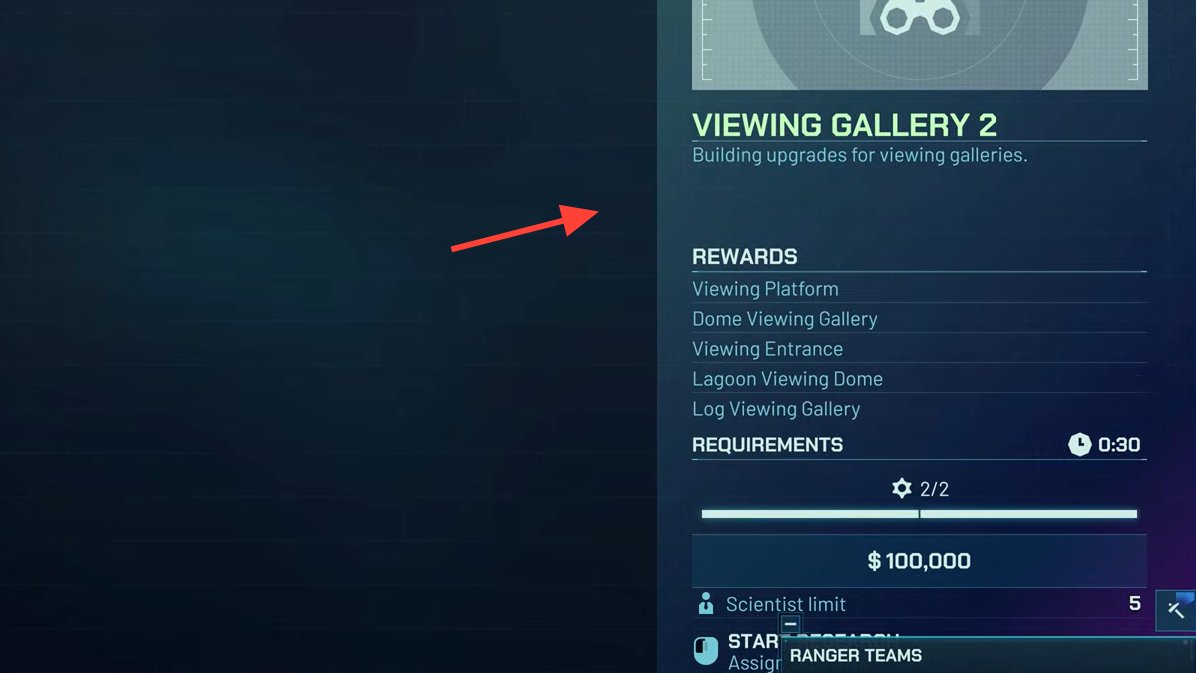
Scientists, logistics, and keeping research affordable
Assign Scientists who meet the Logistics thresholds for each node; avoid over‑assigning high‑salary staff to cheap projects. Some Scientist traits reduce research costs or shorten task times — those pay for themselves quickly if you’re queuing multiple nodes. Staff Center 2 helps by letting you rest more people at once and level your team to handle steeper late‑game requirements.
When to open dig sites
Dig Sites unlock new fossils and species, but each expedition and extraction draws from the same pool of money and Scientists you need elsewhere. Slot these in once Operations, Enclosures, and core Medicine are covered. The payoff is variety — more species means more enclosure designs, better exhibits, and fresh attraction value.
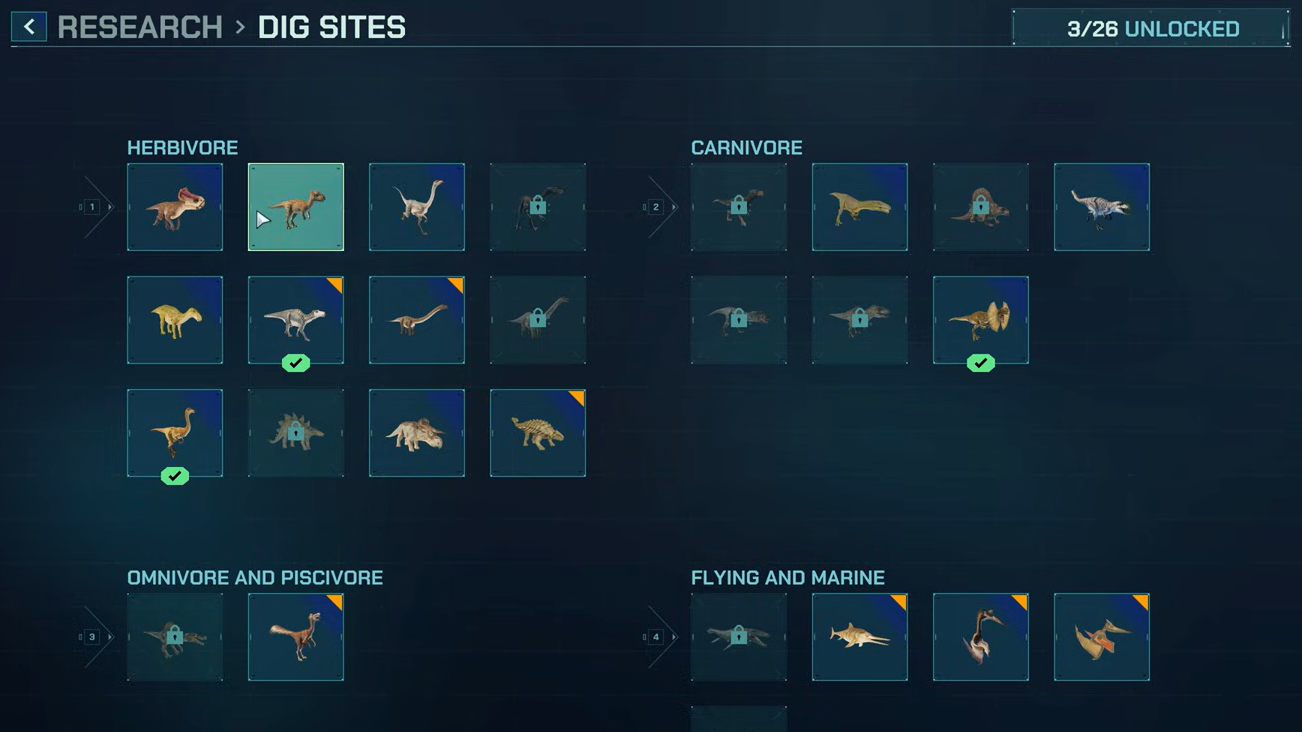
Gene Modification priorities (after your finances are steady)
Once the basics are handled, pick Gene Modification nodes that make dinosaurs easier to house together and less sensitive to imperfect habitats. Four early standouts:
- Cross‑Species Adaptation: Improves tolerance, increasing the chance of Tolerant over Intolerant. Mixed‑species enclosures become far easier to run.
- Group Adaptation: Tunes sociability so larger groups are less likely to trigger Antisocial issues, keeping herds stable.
- Positive Temperament: Raises comfort leeway, which reduces how precisely you must terraform each habitat to keep animals content.
- Confined Space Adaptation: Lowers space demands via higher odds of Humble, letting you safely fit more animals per enclosure.
These traits compound: animals that tolerate other species, accept larger groups, and need less space enable denser, more profitable viewing areas without constant micromanagement.
Hybrids: save the spectacle for last
Hybrids are impressive and boost appeal, but they’re research‑intensive, pricey to run, and unforgiving in an unstable park. Tackle them after you’ve built a steady income base, staffed up, and tuned habitats with the gene work above.
The fastest way to a five‑star park is boring on purpose: stabilize power and staff, harden enclosures, stop diseases cold, then invest in guest flow and viewing. With money secured, expand your roster and lean into gene work that simplifies enclosure design. The showpieces can wait until the park can actually afford the spotlight.

